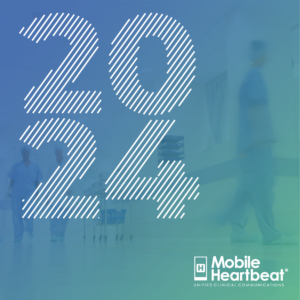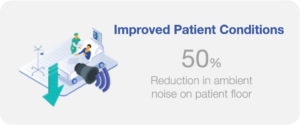Imagine this: A nurse is looking for the on-call cardiologist, but she doesn’t know who’s on call tonight. She only has the phone number for one hospital cardiologist, so she tries their personal number. The physician picks up at home. They’re not on call that evening, so they give the nurse the phone number for the correct provider. Does this sound familiar?
Workflows like these may seem harmless—after all, the nurse found the correct colleague in the end—but their common occurrence in hospitals can lead to delays in patient care and physician burnout. When physicians and other providers have a large influx of patients and little to no personal time, the resulting burnout can affect patient outcomes and even drive physicians to leave medicine. Studies are already demonstrating the effects of widespread burnout on a dwindling physician population, and, unfortunately, this problem has likely been exacerbated by the coronavirus pandemic. Huge increases in patient admissions, supply shortages and workflow disruptions to help infection control are all factors that affect the physician burnout problem.
Fortunately, healthcare administrators can make organizational changes to improve team-based care coordination and mitigate physician burnout. By leveraging collaborative tools to reduce providers’ cognitive burden, healthcare administrators can make it easier for the care team to initiate collaboration with the correct colleague, streamlining time to care.
Contacting the Right Person…
A significant hurdle for coordinating care revolves around “who”. Who should be contacted? Many healthcare organizations use whiteboards to track who’s on-call during a particular shift, or they have unit secretaries track on-call specialists and other shifting roles. But in an emergency, there’s not always time to consult a board or call an extra person.
Without a unified clinical collaboration solution, emergent situations can easily lead to clinicians calling the wrong physician for help or a consultation. But MH-CURE allows users to self-assign Dynamic Roles, such as on-call cardiologist, so that clinicians don’t need to know the name or number of the specialist on call.
When trouble arises, they can use the real-time directory to search for the role they need, then dial the correct person on the first try. Not only does it save time otherwise spent initiating or receiving nuisance calls, but finding the right colleague quicker means the patient receives care sooner.
…At the Right Time
Finding a colleague is only half the battle. When clinicians need to find specific members of the patient’s care team, that’s when the wild goose chase begins. Whiteboards in each patient’s room can have outdated care team information on it, again leading clinicians to call physicians who aren’t on duty.
That’s why it’s so important for your collaboration solution to update in real-time with patient-specific care team information, like MH-CURE’s Dynamic Care Team. Not only can users view each patient’s care team, but they can also use Dynamic Care Team to initiate a group chat or send alerts just to that specific group of colleagues. Because it’s updated instantly, as soon as a provider logs off to go home, they can unassign from their patients so that they won’t appear under the care team list.
Privacy: the Burnout Kingpin
The age-old frustration for clinicians in the hospital revolves around calling. When a physician on-call needs to be reached, no one can find their phone number. As soon as they head home after their shift, the phone rings off the hook. Physicians need a way to protect their privacy when they’re not working so that they can spend their personal time getting some respite from patient care.
Ask your clinical communication and collaboration provider about their privacy capabilities. Critical features include custom caller ID, to mask the physician’s personal or cell phone number so that other users won’t be able to dial the physician’s personal number—instead, they can be routed to the unit secretary or to the private practice office. With MH-CURE, this call masking functionality works even if another user is looking up a physician’s contact details in the directory, or if a physician initiates a call with another user.
By gatekeeping personal phone numbers, physicians can spend their free time recovering from long shifts, rather than working remotely or being attached to the phone.
An App That Works Smarter
At Mobile Heartbeat, we recognize that physician burnout is a serious problem. That’s why we’ve designed our latest release with physician-specific features in mind. By allowing users to mask their personal contact information, MH-CURE empowers providers to protect their personal time. When physicians have time to rest and recover, they can come back to the hospital ready to advance patient care.
To learn more about our latest software release and strategies your healthcare organization can employ to mitigate burnout, schedule a consultation with our clinical mobility experts.




